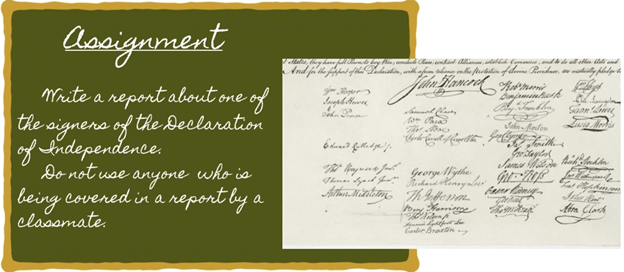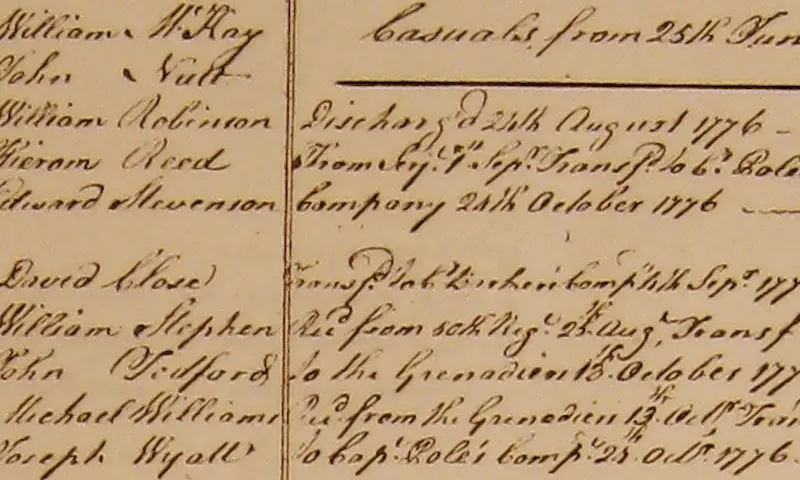With the rise of digital technology, many aspects of traditional education have evolved, and one question that has sparked debate among educators, parents, and students is: Is cursive still taught in schools? Once considered a fundamental skill in early education, cursive writing is now often viewed as outdated or unnecessary in an increasingly digital world. However, cursive handwriting has seen a resurgence in recent years, with some states opting to reintegrate it into the curriculum. Let’s take a closer look at the current status of cursive handwriting education, whether it’s still being taught, which states emphasize its importance, and the various methods for learning and practicing this elegant writing style.
The Current State of Cursive Education
As schools continue to adapt their curricula to meet the demands of the digital age, the question remains: Is cursive still taught in schools? The short answer is yes, but the long answer is more nuanced. Cursive writing, which was once a staple of elementary education, is now viewed differently across various educational systems.
The Shift Away from Cursive Handwriting
For many years, cursive handwriting was a core part of language arts curricula, with students typically learning the cursive alphabet starting in second or third grade. However, in recent decades, the teaching of cursive writing has been declining in many states. This shift is largely due to the increasing reliance on technology in schools and the advent of standardized testing that prioritizes print writing and typing skills over cursive.

With the rise of computers, tablets, and smartphones, many educators and administrators questioned whether teaching cursive was still relevant. This led some school districts to drop cursive instruction in favor of more modern skills, such as keyboarding and digital literacy. However, research from Psychology Today shows that cursive handwriting has numerous benefits, including improving fine motor skills, reading comprehension, and memory retention.
Why Did They Stop Teaching Cursive Writing?
The early 2000s marked a significant turning point in cursive education across American schools. The decline of cursive writing in schools has been attributed to several factors:
- The rise of digital technology: The primary reason for phasing out cursive is the widespread integration of digital devices into the classroom. As students increasingly use keyboards for typing and digital tablets for learning, the focus has shifted away from manual writing to digital literacy.
- Common Core Standards: This shift was particularly accelerated by the introduction of Common Core Standards in 2010, which notably omitted cursive writing requirements from its guidelines. Schools found themselves under pressure to prioritize keyboard skills and digital literacy, viewing these as more relevant for students’ future success in an increasingly digital world.
- Time constraints: School administrators faced mounting pressure to accommodate new subjects like coding and digital citizenship while dealing with limited instructional hours.
- Budget cuts: Budget limitations forced many schools to cut what were deemed “non-essential” programs, including specialized handwriting instruction.
Another contributing factor is the emphasis on standardized testing, where students are tested on reading comprehension and writing skills rather than their ability to write in cursive. As a result, many educators have felt that teaching cursive writing was no longer a priority.
Which States Still Teach Cursive Writing?
As of 2024, cursive instruction has gained renewed momentum across the United States. Nearly two dozen states now mandate cursive writing in their curriculum, according to data tracked from American Handwriting Analysis Foundation. California made headlines by passing the law requiring cursive instruction in public schools for grades 1-6. It was a significant development since California is the most populous state in the US and often influences education trends. This resurgence reflects a deeper understanding of handwriting’s role in cognitive development and academic success.

Some of the states that continue to teach cursive handwriting include:
- Texas: Cursive writing is included in the Texas Essential Knowledge and Skills (TEKS) standards.
- Tennessee: Tennessee requires cursive instruction as part of its English Language Arts standards.
- Florida: Required for proficiency by 5th grade
- Ohio: Included in learning standards
- Virginia: Part of the Standards of Learning (SOL)
- California: In California, cursive writing is part of the state’s curriculum standards for elementary students (grades 1-6)
- North Carolina: North Carolina has recently moved to reintroduce cursive writing into elementary education.
- Alabama: Students must be proficient in cursive by the end of 3rd grade.
- Louisiana: Cursive must be taught from 3rd through 12th grade, required daily practice.
Other states that emphasize teaching cursive include Georgia, Alabama, and South Carolina. These states argue that cursive instruction is not only an essential skill but also helps students with cognitive development.
The Benefits of Teaching Cursive Writing
Despite the growing trend toward digital writing tools, there are significant benefits to learning cursive handwriting that should not be overlooked. Let’s explore this in detail.
Cognitive Development and Learning Benefits
1. Activates neural pathways important for memory
According to studies from NLM, writing in cursive requires more complex hand movements than printing, which has been linked to enhanced brain function. This form of writing has been shown to improve memory retention, help students better understand written material, and promote greater reading comprehension. For students, writing in cursive activates specific neural pathways that aren’t engaged during typing or printing.
2. Fine motor skills
The enhancement of fine motor skills through cursive writing is particularly noteworthy. The fluid, continuous motions required in cursive writing help develop precise finger and hand control. This development isn’t just about writing – it contributes to better overall dexterity and coordination that benefits students in various activities, from sports to playing musical instruments. The hand-eye coordination developed through cursive practice helps students become more proficient at tasks requiring visual-motor integration.

3. Reading comprehension
Reading comprehension benefits significantly from cursive instruction. When students learn cursive, they develop a better understanding of how letters flow together to form words, which aids in reading fluency. This understanding helps students recognize words as complete units rather than individual letters, leading to faster reading speeds and better comprehension. Additionally, the brain’s reading network becomes more refined through cursive writing practice, as students learn to both produce and recognize connected letter patterns.

4. Spelling abilities
The spelling advantages of cursive writing are particularly interesting. Because cursive writing connects letters in a word, students develop a stronger memory of word patterns. This muscular memory of writing whole words in one continuous motion helps reinforce correct spelling patterns in the brain. Research has shown that students who learn cursive often demonstrate better spelling abilities compared to those who only print or type.
Practical Advantages of Cursive Writing
1. Speed and fluency
One of the most immediate advantages is increased writing speed. Once students become proficient in cursive, they can write more quickly compared to print writing. This continuous motion not only speeds up writing but also reduces hand fatigue during extended writing sessions. This can be especially beneficial in situations where students need to take notes quickly, write essays, or complete assignments under time constraints.
2. Signature development
A unique cursive signature provides a personal touch and is still legally important for many documents. Having the ability to create and consistently reproduce a cursive signature is a practical life skill that remains relevant in today’s digital age.

3. Ability to read historical documents
The ability to read historical documents is an often-overlooked benefit of cursive instruction. Many important historical documents, family records, and older correspondence are written in cursive. Without cursive reading skills, students might find themselves unable to access these primary historical sources or read family documents and letters from older generations.

4. Note-taking capabilities
Cursive allows for quicker and more efficient note-taking, especially in situations where typing isn’t feasible. The increased speed allows students to capture more information during lectures. The continuous flow of cursive writing also helps maintain the thread of thought, as there are fewer interruptions in the writing process. Many students find that the physical act of writing in cursive helps them better remember and process information compared to typing notes.

The Future of Cursive Writing: A Blend of Tradition and Technology
Interactive Handwriting Practice
1. Practice Writing Online on Tablets and iPads
The landscape of cursive instruction is evolving dramatically with the integration of digital tools, learning cursive doesn’t have to be restricted to paper and pencil. Thanks to technological advancements, there are now various ways for students to practice cursive writing online.

Many students today have access to tablets and iPads in their classrooms. With the help of apps specifically designed for cursive writing practice, students can use these devices to trace, practice, and refine their cursive handwriting. Some apps even simulate the feel of writing with a pen or pencil, offering a hands-on experience on a digital platform.
2. Online Writing Lab
Online writing labs have become increasingly sophisticated, offering comprehensive cursive curricula that can be accessed from anywhere. An online writing lab can provide students with step-by-step instructions, video tutorials, and interactive exercises to learn and practice cursive writing. These platforms often include games and challenges that make learning more engaging and fun. Additionally, they offer personalized feedback on how students are progressing with their cursive writing skills.
3. Virtual Practice Platforms
Virtual practice platforms represent another significant advancement in cursive writing. There are many interactive websites and apps that combine traditional handwriting worksheets with interactive cursive writing practice. These platforms allow students to practice on touch-sensitive screens while receiving real-time guidance on their stroke direction, letter spacing, and overall writing fluency. Some platforms even include collaborative features where students can share their progress with teachers or peers, creating a more interactive learning environment.
4. Interactive Assessment Tools
These tools can measure various aspects of handwriting, including letter formation, spacing, size consistency, and writing speed. Teachers can track students’ progress over time, identify areas needing improvement, and provide targeted intervention when necessary. Many of these tools also generate detailed progress reports that can be shared with parents and used to inform instruction.
Preserving Traditional Skills
While technology undeniably enhances the learning experience, traditional approaches to teaching cursive remain vitally important. These time-tested methods provide a strong foundation for developing handwriting skills and fostering a love for this expressive art form.
1. Cursive Letters Chart
Cursive letters chart serves as a constant visual reference for students, showcasing the correct formation of both uppercase and lowercase letters. These charts often include arrows and directional cues to illustrate the proper stroke order and connections between letters. By providing a clear visual model, cursive alphabet charts help students:
- Understand letter structure: Students learn to recognize the distinct shapes and features of each cursive letter.
- Develop consistency: Referring to the chart helps students maintain consistency in their letter formation, ensuring their writing is legible and uniform.
- Internalize letter connections: Charts clearly demonstrate how letters connect to each other, promoting a smooth and flowing writing style.

2. Cursive Writing Practice Sheets
Practice sheets with pre-printed guidelines are invaluable for helping learners practice their cursive writing. These sheets typically feature dotted lines and arrows that guide students in tracing letters, words, and sentences. By following these guidelines, learners develop better control over their hand movements and gradually move toward writing without tracing. As students progress, the practice sheets become more advanced, allowing them to practice entire sentences or even passages.
Head over Worksheetzone to download your free printable Cursive Writing Worksheets now!
3. Tracing Cursive Practice
Practice tracing cursive is a tried-and-true method for teaching cursive writing. By tracing over model letters and words, students reinforce muscle memory, which is key for mastering cursive. Regular practice tracing cursive worksheets help develop both fine motor skills and hand-eye coordination, which are essential for fluid, legible handwriting. Over time, students can gradually transition from tracing to freehand writing, increasing their confidence and proficiency.

4. Progressive Skill-Building
A key principle of effective cursive instruction is progressive skill-building. This approach involves gradually increasing the complexity of writing tasks, ensuring students master each stage before moving on to the next. The typical progression includes:
- Individual letters: Students begin by practicing individual letters, focusing on correct formation and stroke order.
- Connecting letters: Once students are comfortable with individual letters, they learn how to connect them smoothly to form words.
- Word writing: Students practice writing common words and sight words, building their vocabulary and fluency.
- Sentence construction: Students learn to write complete sentences, focusing on grammar, punctuation, and sentence structure.
- Paragraph writing: Finally, students progress to writing paragraphs, combining their cursive skills with their knowledge of composition and writing conventions.

This progressive approach ensures that students are not overwhelmed and can continually improve at a manageable pace.
5. Consistent is the Key
Cursive writing, like any other skill, requires consistent practice to achieve fluency. Regular writing sessions help reinforce the concepts learned in class and support the development of a personal writing style. By setting aside dedicated time for cursive practice, students improve both speed and accuracy, eventually gaining the muscle memory needed for fast, legible writing. Practicing regularly also builds confidence, helping students transition from structured exercises to real-world applications like writing letters, journaling, or taking notes.
Frequently Asked Questions
1. Why did they stop teaching cursive writing?
While cursive writing instruction declined in some schools, it wasn’t entirely eliminated. The shift away from cursive was often attributed to a combination of factors:
- Rise of digital literacy: With the increasing use of computers and keyboards in classrooms, there was a greater emphasis on digital literacy skills.
- Standardized testing: Standardized tests often focused on keyboarding and multiple-choice formats, reducing the perceived need for cursive writing proficiency.
- Time constraints: Cursive instruction was sometimes viewed as time-consuming, and with growing curriculum demands, it was often deprioritized.
However, the recognized benefits of cursive writing have led to its resurgence in many educational settings.
2. Which states still teach cursive handwriting?
Many states across the US, including Texas, Tennessee, California, Florida, Alabama, etc, continue to teach cursive handwriting as part of their state educational standards.
3. What are the benefits of learning cursive writing?
Learning cursive can improve cognitive function, fine motor skills, and memory retention. It also provides students with the ability to write more quickly and legibly, and it offers a form of self-expression through handwriting.
4. Can I practice cursive writing online?
Yes! There are many online resources available for practicing cursive writing, including:
- Online writing labs: These platforms offer structured lessons, interactive exercises, and personalized feedback.
- Apps: Many engaging apps are designed specifically for cursive writing practice, often incorporating gamification and interactive features.
- Websites: Numerous websites like Worksheetzone.org provide free printable cursive writing worksheets, alphabet charts, and tracing exercises. These online resources make it convenient and fun for students to learn and practice cursive writing at their own pace.
Final Thoughts
The question of is cursive still taught in schools largely depends largely on where you live and the specific educational system in place. While many schools have moved away from teaching cursive due to the growing emphasis on technology and standardized testing, there are still plenty of states and educators who value the cognitive, motor, and historical benefits of cursive handwriting. As technology continues to advance, students can now also explore interactive tools, practice sheets, and online resources to master this valuable skill.
If you’re looking to enhance your cursive skills or need free, printable worksheets to practice, head over to Worksheetzone today! We offer a fun, engaging way to help you master this timeless skill and take your handwriting to the next level.







